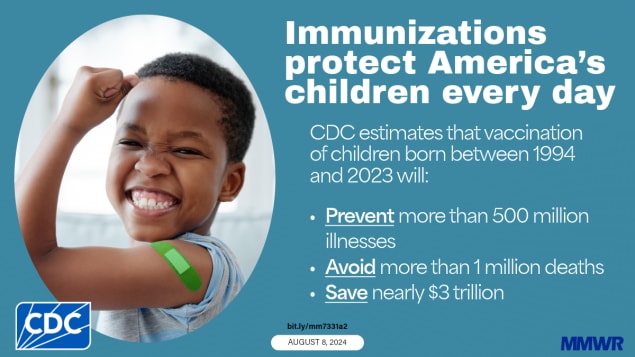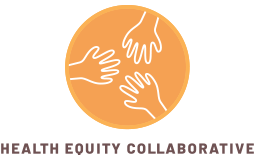28 Aug New CDC Research Helps Set the Record Straight: Vaccines Work
National Immunizations Awareness Month (NIAM) is a great time to highlight the importance of vaccination in protecting public health. As NIAM 2024 draws to a close, we wanted to highlight new research that assessed and quantified the health benefits and economic impacts of routine U.S. childhood immunizations from 1994-2023.
The key takeaway:
Among approximately 117 million children born during 1994–2023, routine childhood vaccinations will have prevented approximately 508 million lifetime cases of illness, 32 million hospitalizations, and 1,129,000 deaths, at a net savings of $540 billion in direct costs and $2.7 trillion in societal costs. From both payer and societal perspectives, routine childhood vaccinations among children born during 1994–2023 resulted in substantial cost savings. Childhood immunizations continue to provide substantial health and economic benefits, while promoting health equity.
The new CDC report is great news for those of us who are working to achieve equitable immunization rates. The social and economic benefits of getting vaccinated are real and we should continue to encourage patients to get immunized.

Image: CDC
As we look to address existing disparities in immunization rates and increase vaccination rates in low-income minority communities, the following strategies should be considered.
Strategies for Improving Immunization Rates in Lower-Income Minority Communities
- Community Engagement: Building trust and partnerships with community leaders, healthcare providers, and faith-based organizations is essential for addressing vaccine hesitancy and promoting immunization.
- Culturally Competent Outreach: Tailoring outreach efforts to the specific needs and cultural values of minority communities can increase vaccine acceptance.
- Accessible Vaccination Clinics: Establishing convenient and affordable vaccination clinics in underserved areas can improve access to immunization services.
- Health Education and Communication: Providing clear, accurate, and culturally relevant information about immunization can dispel misconceptions and encourage vaccine uptake.
- Addressing Social Determinants of Health: Addressing underlying social and economic factors that contribute to health disparities can create a more equitable environment for immunization.
By implementing these strategies, we can work towards bridging the immunization gap and ensuring that everyone has the opportunity to benefit from the protection afforded by vaccines. Let’s commit to building a healthier and more equitable future for all.
Resources:
- Health Equity Collaborative Conversations w/ Dr. Leadris Lubrd, Acting Director for the CDC’s Office of Health Equity (OHE): https://healthequitycollaborative.org/respiratory-disease-season-diverse-communities-what-can-you-do-to-stay-healthy/
- Centers for Disease Control and Prevention (CDC): https://www.cdc.gov/
- National Foundation for Infectious Diseases (NFID): https://www.nfid.org/
- Immunization Action Coalition (IAC): https://www.immunize.org/


